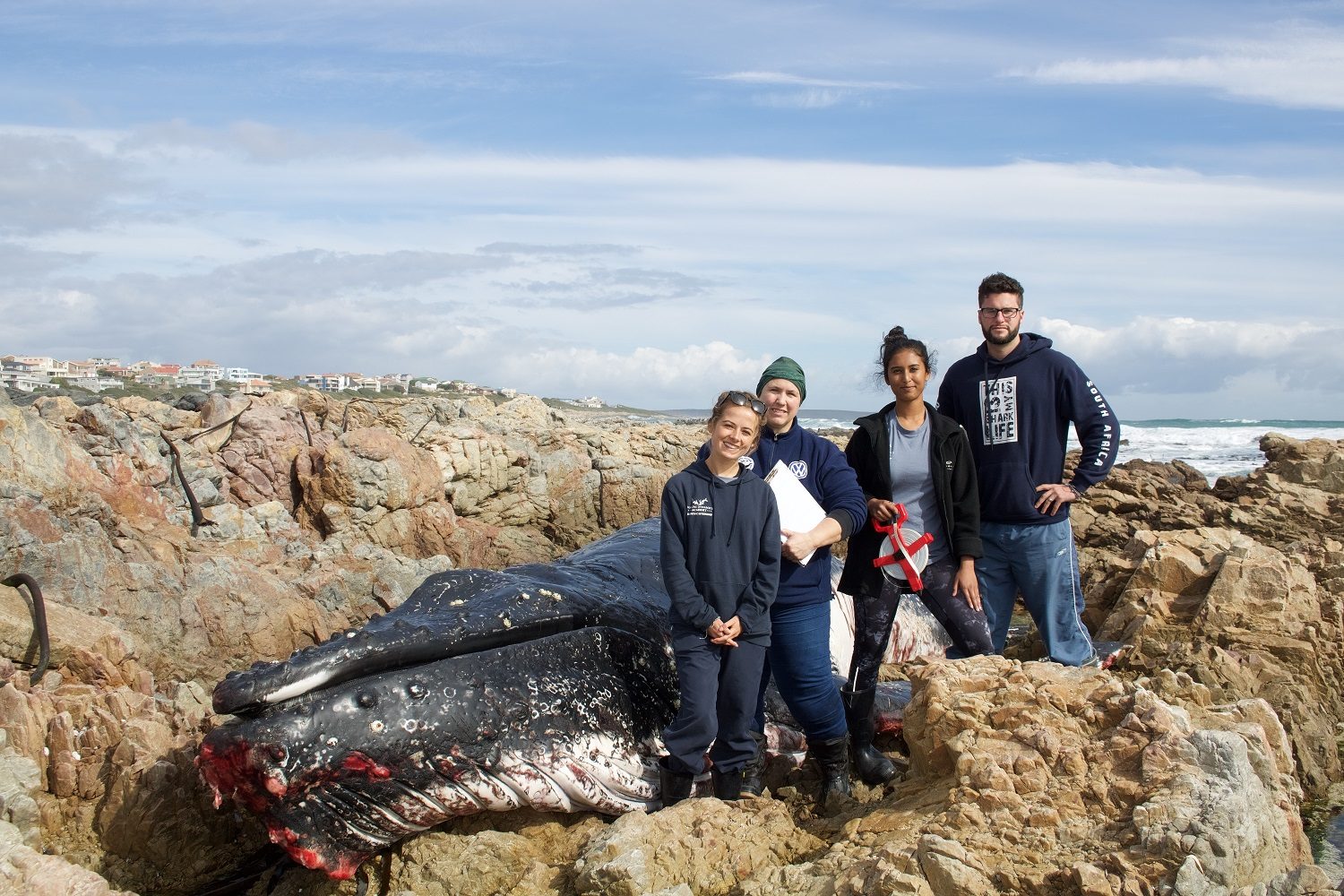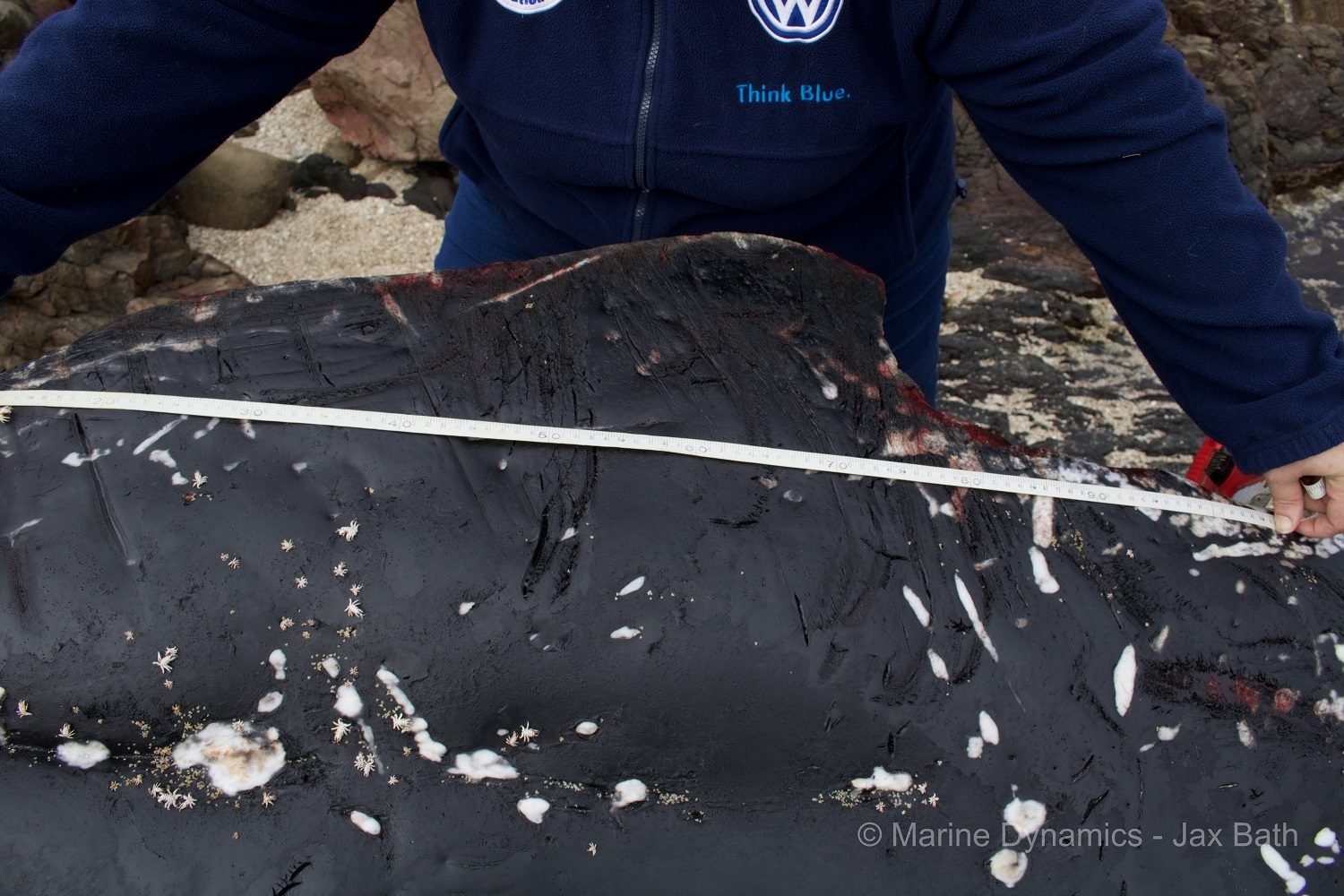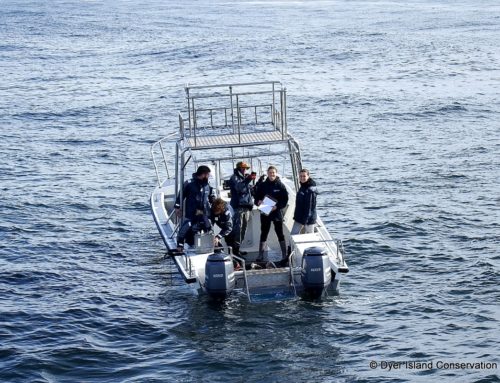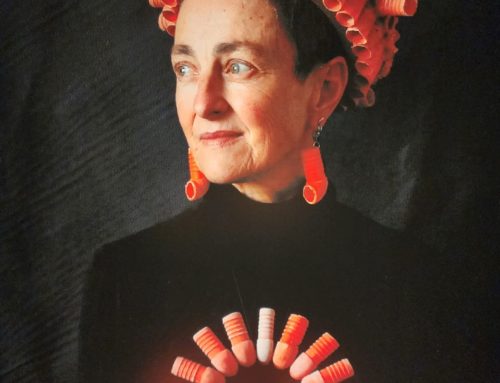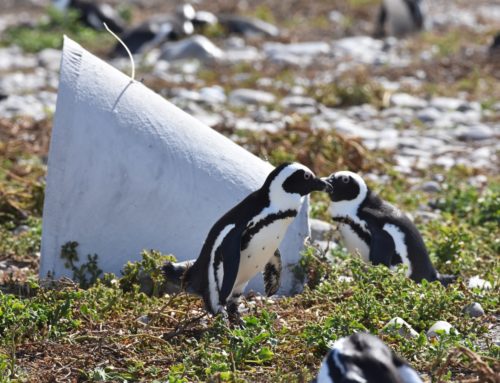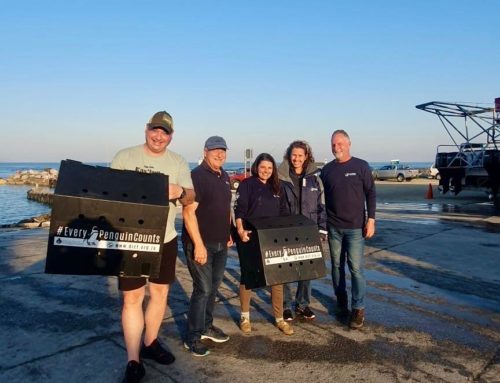August 17, 2018 Meredith Thornton: Research Coordinator, Dyer Island Conservation Trust
Earlier this week the Dyer Island Conservation Trust received a call about a whale on the rocks at Skulpiesbaai, near Stanford’s Cove. Upon arriving on site our Research Coordinator, Meredith Thornton, confirmed that the whale was freshly dead, and either died at sea within the last 24 hours, or came ashore alive overnight. The team then proceeded to collect a full suite of photographs, along with numerous standardised scientific measurements. The whale was an 8.3m juvenile female humpback whale and no cause of death was apparent.
After measurements were complete, skin and blubber samples were collected, along with sub-samples of the numerous barnacles and cyamids that live on the surface of the whale. These little free-riding animals are both crustaceans. The cyamids eat whale skin, roaming all over the body with their sharp claws, but mostly live in folds and crevices around the eyes, genital slits and where the pectoral fins join the body. They also inhabit wounded or diseased areas and find shelter in areas where there are barnacles present. Barnacles and whales usually live in a commensal relationship, where the barnacles benefit by hitching a free ride to wherever the oceans are rich in plankton, upon which they feed, while the whale is unharmed. However, sometimes barnacles can proliferate to such an extent that the whale is negatively impacted and the relationship becomes parasitic.
The Overstrand Municipality responded with great efficiency and the carcass was cut into four pieces and removed to the dump by nightfall. Fortunately, this animal was small for a humpback whale, making it more manageable at about 8 tons. Adult humpback whales are usually 14-15m long, weighing approximately 40 tons! Humpback whale populations have recovered exceptionally well since whaling finally ended in the 1960’s.
Interns from the Marine Dynamics Academy assisted at the stranding and had the following to say about their experience:
“On August 14th, 2018, I saw my first beached humpback whale- and if I could choose a word to describe the experience, it would be bittersweet. When we first arrived to the rocky beach where the expired whale was stranded, I felt sadness that such a beautiful creature had passed away. However, I learned that it’s important to separate emotion from scientific thought, since the death of the whale also contributes heavily to marine biology research and gives us an essential peek into the workings of life under the ocean surface. Having only specialized in human physiology and anatomy, I was initially disoriented while examining the humpback whale with Meredith. I learned many valuable skills, such as whale anatomy, measuring whales, taking samples of blubber and barnacles, and many miscellaneous facts. Halfway through the examination, and after asking many questions, which Meredith answered patiently, similarities between my knowledge of human biology and this new whale biology jumped out at me. With these revelations, a sense of awe dawned upon me. It’s fascinating to me that life can take such diverse forms and yet still have biological similarities. Equally as captivating were the unique differences between life forms, making us all so different, yet still the same.“ [Clisha D’Souza]
“As upsetting as it is to see such a beautiful creature in this state on the rocks, the opportunity to get so close to a humpback whale from a scientific perspective was invaluable, and one I never imagined I would have here with Marine Dynamics. I was particularly surprised to find such an abundance of barnacles and lice living off the whale’s skin. This gave me a new appreciation for the unique and complex role these whales play within a greater ecosystem and enhanced my passion to work towards its conservation. Working with Meredith to take measurements and samples so soon after the whale’s passing was inspiring, as she demonstrated how the death of these beached animals, though tragic, are never in vain. Rather, every effort is made to give them a dignified legacy by contribution to science.“ [Anna Harrison]
The Dyer Island Conservation Trust is a member of the Overstrand Stranding Network – a collaborative group of organisations that ensure as much information as possible is retrieved from every stranding, live animals are refloated or euthanised if necessary and that carcasses are disposed of safely if they come ashore in a built-up area.


